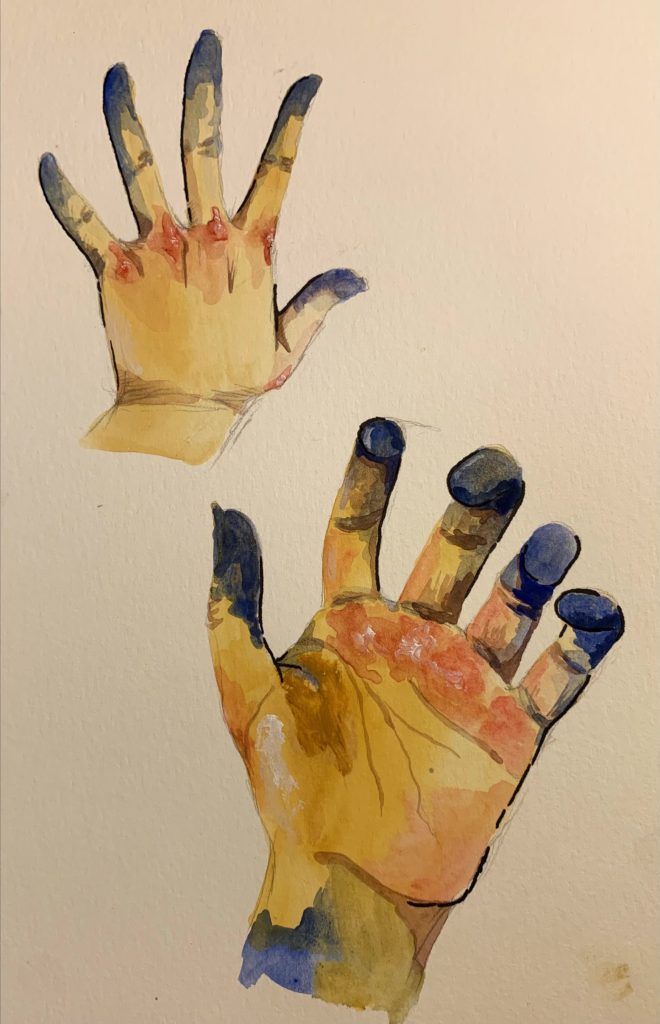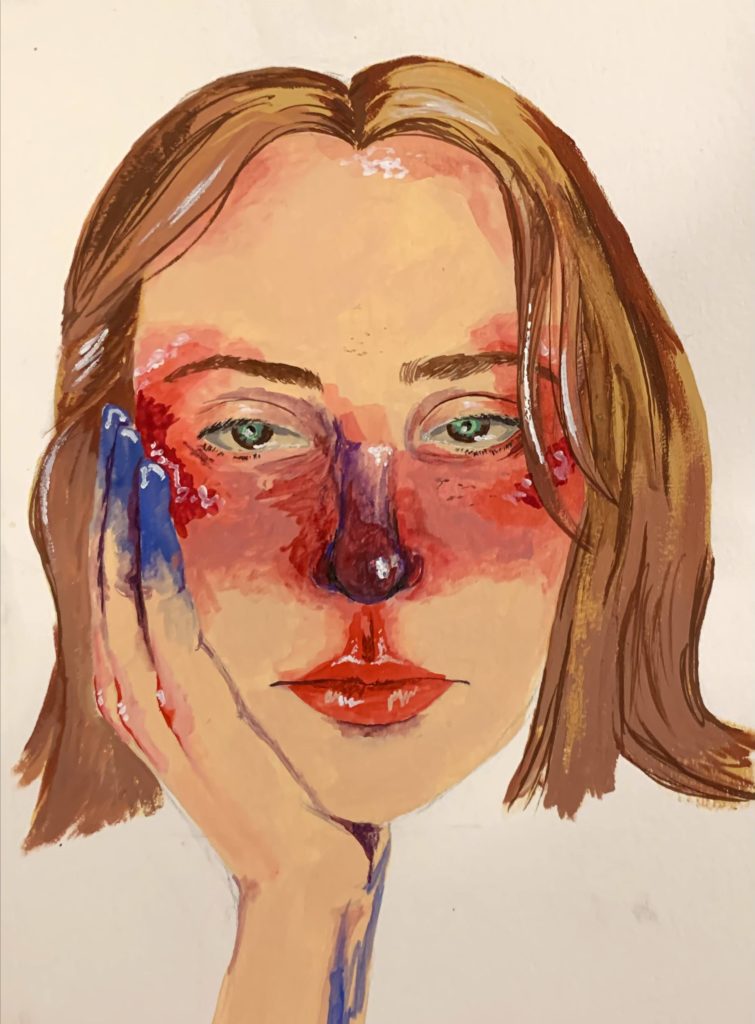Gouache is one of my favorite mediums and is actually one of the first mediums that adapted me into painting regularly and developing a skill set. There are a few types of gouache (like Winsor and Newton), from tubed to jelly cup (like Himi Gouache). It has unique properties compared to acrylic and oil paints that I really enjoy, especially for sketchbook work and painting on paper. If you already know how to use gouache paint, here are 7 things you need to know about gouache paint when getting started.
1. Gouache is a water-based paint
What this means is that gouache is water soluble. This makes for a very easy clean-up process. However, while acrylic paint is also water soluble, gouache is a much more thin consistency with almost a chalk like dried texture, meaning that even after it dries, water can affect it.
It is the creamier and silkier paint option.
One of the biggest problems I have actually always had with acrylic and oil based paint is how easily they can stain my clothing when I accidentally get paint on myself. With how water-soluble gouache is, there is never a time, because of its consistency, that it will not come out of my clothing.
2. Gouache paint dries dry quickly; and can always be re-used!
Gouache is a very fast-drying paint. It resembles watercolor when broken down to its thinnest form, and dries just as quickly as water. The thicker the gouache is on the canvas or paper, the longer it will take to dry, but still often faster than even acrylic paint.
With how quickly gouache paint dries, there is no need to fret if your paints are drying up on your palette! With some water, you can re-activate the gouache paint (even years later, trust me on that one) at any time.
3. Gouache can be thinned very easily
Gouache is one of my favorite mediums because its resemblance to watercolor, while still being buildable. Even most times when the layer of paint has dried on the paper, I will go in with more water on my brush to thin out the consistency of the paint.

4. Gouache is buildable
While gouache can resemble thin layers like found in a watercolor (which is already very buildable), gouache can also be thickened drastically. Most often, creating mildly opaque layers on the paper or canvas will make the coloring of the paint that much more depth-filled.
Similar to how oil is able to be thickly plopped on to the canvas, you can also create similar textures with gouache. You can really build a thick layer of paint, but it is important to remember that layers underneath might muddy the color because of how susceptible they are to moisture.
5. Gouache paint dries matte
This is one of the most important aspects to understand about gouache paint in comparison to oil or acrylic, which are both glossy finishes traditionally.
With the chalky-like consistency comes a very matte or velvety finish, which is important to note if you are planning thick layers for your piece. This can sometimes mean that the paint will crack when completely dried.

6. Gouache needs to be protected after application
Since gouache is so easily manipulated by water or friction in any case, it is important to protect finished pieces. I particularly do not recommend using a varnish, as in the past I have had problems with that liquid possibly destroying what I have painted. If it is a special piece, I would opt for having it framed with a glass pane to protect it.
7. Gouache is quite opaque
One of my favorite aspects about gouache is how opaque it is. It has such a buttery and creamy consistency when applied that is hard to pass up. With its opacity, you can really glide over a canvas easily and also just as easily cover up an underpainting if you so desire. I personally recommend Imprimatura underpainting when using gouache.
*all images provided in this post are my own pieces of artwork and all are painted with gouache

